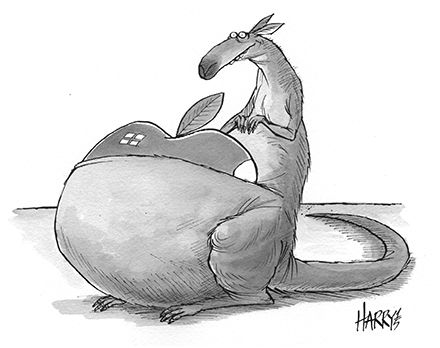Apple’s stellar Kangaroo debut confirmed that a lack of supply rather than a lack of demand is holding back Australia’s stunted corporate bond market.
Hopes are rife that the A$2.25bn (US$1.65bn) trade, which dwarfed all previous Australian dollar sales by non-financial companies, will help expand the country’s fixed-income arena.
“The deal should encourage other large global borrowers to look at the Australian dollar market as an alternative and diverse source of funding, with Apple having shown it to be a competitive and deep jurisdiction in which to raise funds,” said Rod Everitt, manager director syndicate at lead manager Deutsche Bank.
Domestic issuance remains constrained by the competitive terms on offer in the local loan market, but bankers are hoping that Apple’s debut will draw other global issuers – especially at a time when heightened volatility is underlining the importance of a diversified funding base.
“While Apple represents the cream of the crop with its extraordinarily strong balance sheet and high ratings, it shows there is plenty of appetite for A$1bn-plus corporate trades from the right names,” said an Australian fund manager who participated in the issue.
Local DCM bankers do not believe offshore demand will be impacted by the latest Chinese market gyrations and deepening concerns over a hard economic landing, despite Australian assets being viewed as a liquid proxy for Chinese risk.
“US investors are not allowed to buy Kangaroos in the primary market, Europe typically only takes around 5% of these offerings, while Asian accounts tend to see Australia as a regional safe-haven,” a DCM manager said.
Apple’s geographical distribution statistics were in line with smaller corporate offerings as Australian and New Zealand accounts picked up 65% of the three-tranche transaction while Asian accounts bought just under 30%.
The Australian market benefits from a US$1.7trn pension pool, the world’s fourth biggest according to Towers Watson, with 15% of assets allocated to bonds, versus a global average of 31%.
Even without a reallocation away from equities, bond funds will grow endogenously as employees must set aside 9.5% of their wages into superannuation (retirement) funds each year.
There has also been a steady increase in orders from Australian middle-market accounts (small funds, councils and charities, etc) as well as from Asian investors as underlined by their near A$700m Apple allocation.
Fund managers, attracted by Apple’s status as a rare blue-chip technology issuer and its decent pick-up over sovereign, supranational and agency Kangaroos, bought 60% of the bonds.
Apple priced in line with the company’s US dollar curve and just inside its euro curve but offered plenty of value in terms of Australian comps.
Apple’s A$1.15bn seven-year tranche, rated Aa1/AA+ (Moody’s/S&P), priced at 110bp over asset swaps, three days after the University of Sydney, rated Aa1, paid 95bp for a domestic 10-year medium term note.
There was even talk of switching out of lower yielding semi-government or state bonds into the Apple paper but traders saw no evidence of this in the secondary market.
The lack of supply from top-quality corporate issuers contributed to the success of the trade.
Banks traditionally provide super-tight syndicated loans for up to five years but there has recently been a move towards seven-year loans which has reduced corporate sales in the bond market’s seven-year sweet spot.
Joint lead managers CBA, Deutsche Bank and Goldman Sachs drew plaudits for choosing tenors of four and seven years as this provided investors with two distinct options, something an offering at five and seven years would not have done to the same extent.
There was also praise for going out with generous initial price talk to secure a huge order book in excess of A$3bn, which slipped only slightly when guidance was tightened by 5bp.
“Apple’s success, combined with SABMiller’s recent A$700m print, raises the profile of the Australian dollar market especially in volume terms,” said another syndicate banker.
“The big takeout is that it showed investors are willing to get involved if issuers are prepared to put value on the table,” the banker stressed.
Apple’s Kangaroo investors will want its debut to perform better than the company’s inaugural US$17bn bond sale in 2013. The tech giant’s first bonds famously tumbled as Treasury yields spiked higher to leave its 10-year paper trading as low as 88 cents within three months.
Apple’s four-year dual-tranche and seven-year Kangaroo bonds tightened in 2bp on the break from August 21’s pricing at 65bp over asset swaps/bank bills and 110bp over asset swaps respectively.
These spreads jumped out to 76bp and 128bp on the bid side on Tuesday as the global risk rout deepened, before narrowing back to 66bp and 118bp today, according to Sydney traders.
